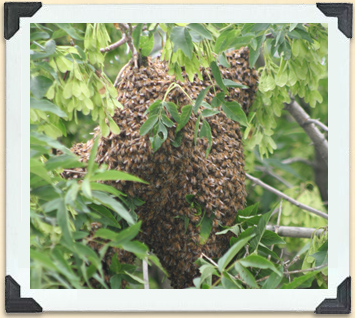The Keeper

A swarm of bees is quite impressive-it often consists of a rather large ball of bees.
© Wendy Molenaar
Swarms
A swarm is a group of bees that leave the hive with the old queen in search of a new home. They usually leave behind about half of the colony, plus the makings of a new queen. Beekeepers do not want their bees to swarm, as it leads to a slowdown in productivity as the colony rebuilds itself.
Overcrowded conditions and poor ventilation encourage swarming. Beekeepers can add more honey supers to prevent overcrowding, or make more openings in the hive to improve ventilation. By keeping a watchful eye on a colony, the beekeeper will recognize signs that it is planning a swarm.
Swarm cells are one of the most obvious signs. Worker bees make these cells to house their future queen. Quite different than regular cells, they are about 3 cm long, hang downward and look like a peanut shell. Worker bees move new eggs into swarm cells and feed the larvae on royal jelly only. They may make several swarm cells to ensure a future queen. The first bee to emerge tries to kill the other contenders, since only one can become queen. Beekeepers can remove swarm cells to prevent swarming.




